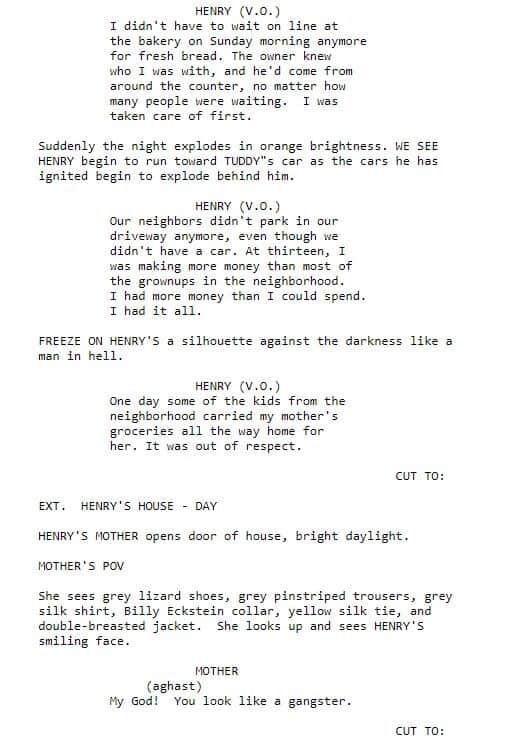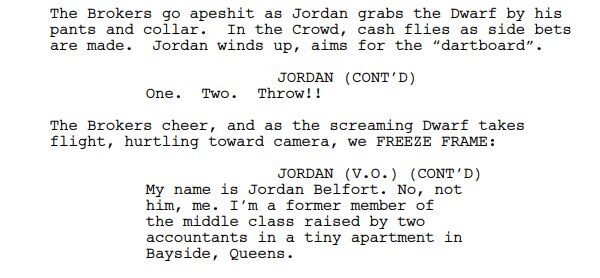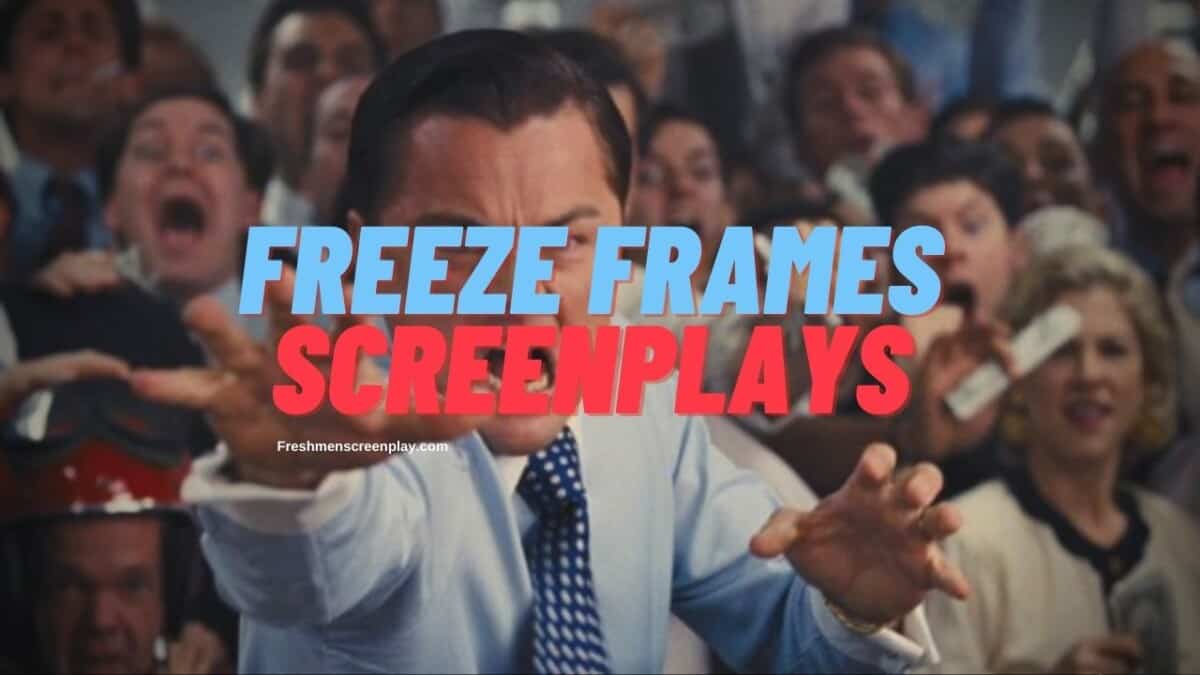First, what is a freeze frame? It’s a point of any movie where the screen stops and pauses on one image.
It’s prevalent in Martin Scorsese films. Generally, followed by a voice-over explaining the situation we’re watching or about to watch.
Now
How do you write a freeze-frame in a screenplay? You write a freeze-frame in a script by writing the subheading “FREEZE FRAME,” followed by the character’s name and (V.O) standing for “voice over.” After it’s over, write “BACK TO SCENE” or “END FREEZE FRAME.”
Example:
INT. HIGH SCHOOL - DAY
Sarah waves at Jonny. Jonny gives a cool grin back at her. He trips over his own feet. Before the fall…
FREEZE FRAME
Jonny (V.O) This was my life. Every time I get ahead, I pull myself back.
END FREEZE FRAME
Jonny's face hits the locker then the floor.
Another way I’ve seen this done is by writing FREEZE FRAME in the action line itself.
Example:
Sarah waves at Jonny. Jonny gives a cool grin back at her. He trips over his own feet. FREEZE FRAME.
Jonny (V.O) This was my life. Every time I get ahead, I pull myself back.
This version saves a line in the script, but either way will work fine.
Freeze Frame Examples in Screenplays
Like I said earlier, I see this in Martin Scorsese films more than anything else. Let’s see how he writes them.

FREEZES ON HENRY’S
Followed by what we are looking at. Then the voice-over.

We FREEZE FRAME:
This was followed by a voice-over once again.
Are you starting to see that there is no pattern between the scripts using this FREEZE FRAMES? That’s because it’s not a right or wrong way to use them. But like with any technique in screenwriting, you use them sparingly.
Why you shouldn’t use Freeze frames in Screenwriting
Freeze frame choices are made by the director in the editor’s room. Not by the screenwriter. They are a stylistic choice, not a story one.
If you noticed, all the examples from scripts we see are from the production-ready screenplays and not spec scripts. If you’re reading this, unless you’re about to solo produce your own script, you’re writing a spec script.
Which means you have no control over the final look and feel of the movie. But you do have control over the story. With this said, have a good reason to use a freeze-frame.
Why you should use Freeze frames in Screenwriting
If you have a narrator in your script explaining exposition. This might be the only reason to use one.
I’ve never seen a script use a freeze-frame without some sort of (V.O) to follow.
Make sure what we’re about to hear pushes the story forward in a significant way. If not, it’s probably not a good idea to use.
Now its time to hear from you:
Did I miss anything?
Do you have a good reason for using freeze frames?
Whatever your answer is, let’s hear it in the comments below.

